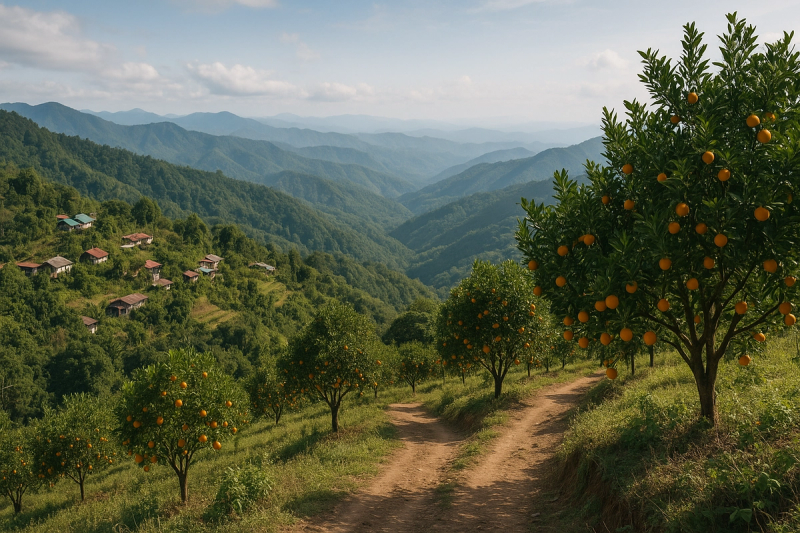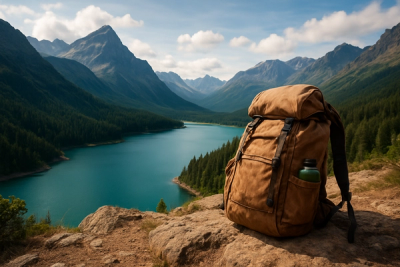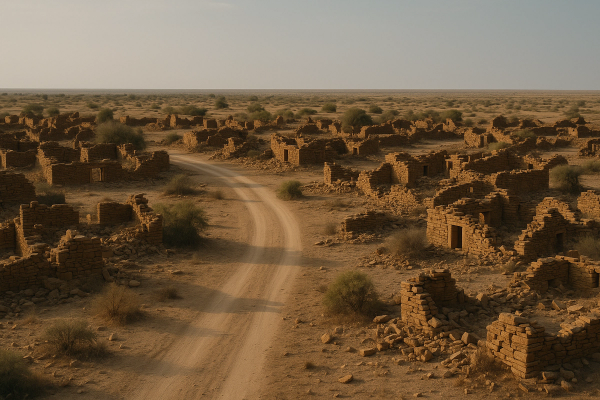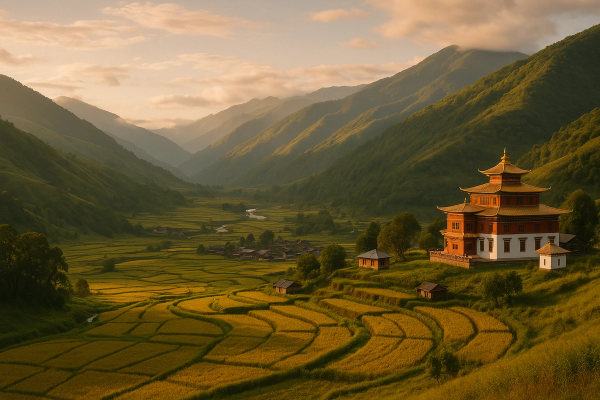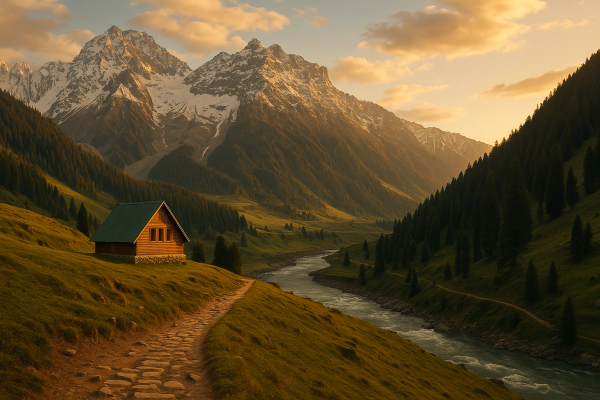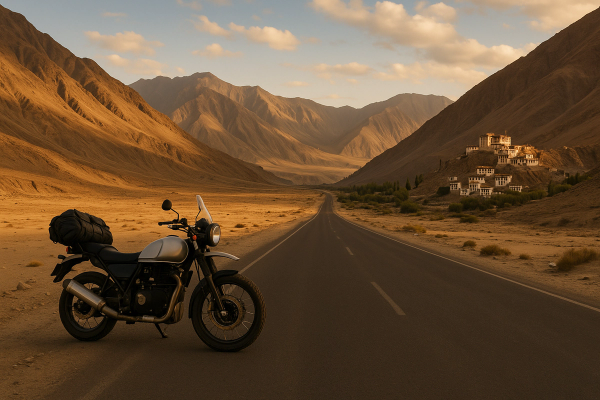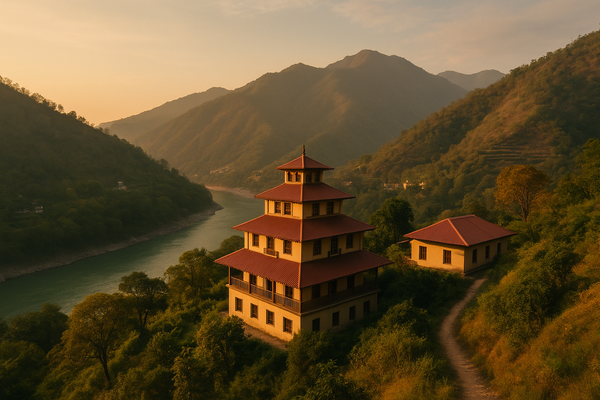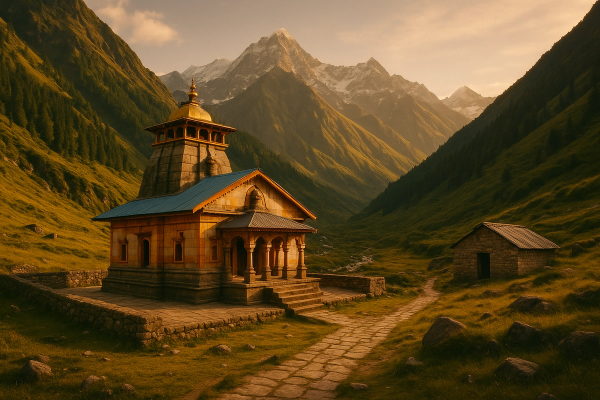Jampui Hills & Vanghmun Orange Valley, Tripura Guide – the hill I didn’t know I needed#
So, um, let me just say this straight – Jampui Hills caught me off-guard. I thought it’d be like any other “hill station” we keep hyping on Instagram. But nah. Vanghmun Orange Valley in Tripura is its own vibe. Mist rolling over ridges, wooden houses with slanted tin roofs, Mizo-Lushai songs floating during evenings, and oranges – bright, sweet, sharp kind of sweet – just hanging like fairy lights on green slopes. I went in late autumn and honestly, didn’t expect it to be so clean and chill. People were kind, no tourist traps shouting in your face. It’s more like you come, you breath, you eat slow food, you watch a sunrise that makes your phone shut up… and you start talking to strangers who don’t feel like strangers anymore.¶
Where exactly is this place and why it feels different#
Jampui Hills sits in North Tripura, hugging the Mizoram border, roughly 3,000 feet up (give or take, locals will just say “upar jao, thoda thanda hai”). Vanghmun is the main village people mention – the “Orange Valley” spot, and sort of the launch pad for sunrises, orchards, and treks to Betlingchhip. If you’re thinking Darjeeling-level crowds, no, relax. It’s slow tourism here. Old-school. You stay at a tourist lodge or a homestay, wake up to clouds playing hide-and-seek, do long walks – not like fancy manicured promenades – these are proper, winding hill roads with pines and jackfruit and bamboo knocking shoulders. Culture is a big blend: Tripuri, Mizo-Lushai (Lusei), Bengali influence. Church bells, rice beer stories (don’t overdo it, bhai), and those orange terraces. Also, small note – this place used to be called the “Orange Hills” for ages. Yields dipped some years because of pests and climate changes, but revival’s happening with hardy mandarin varieties. You still get oranges, marmalades, pickles, and honey. It’s not a fake branding… just a realistic one.¶
How to reach (and yes, the last mile is kinda twisty)#
From Agartala, it’s around 200–230 km by road depending on the route and your driver’s mood. Most folks go via Teliamura–Ambassa–Manu–Kumarghat, then up towards Dharmanagar > Kanchanpur > Vanghmun. The nearest big railway station is Dharmanagar. If you’re flying, Agartala’s MBB Airport is your best bet. Now, options: state buses and shared Sumos run to Kanchanpur and further. Shared Sumo from Dharmanagar to Kanchanpur is usually around ₹250–350, and onward to Vanghmun it’s roughly ₹100–200 (changes with demand, so don’t fight with the driver, just bargain nicely). A reserved cab Agartala to Vanghmun can be ₹6,000–8,000 one-way, more if your car is big and you stop ten times for selfies. Roads are decent, but the final climb is curvy, sometimes foggy. Don’t do the drive late night unless you’re a mountain goat. Be ready for a couple of police check-posts near the border zone – carry ID. For me, the last hour felt like a slow rollercoaster… not scary, just hilly, with that kind of silence you don’t get in cities.¶
Where to stay (prices that don’t make your wallet cry)#
Two main styles: Tripura Tourism’s Eden Tourist Lodge at Vanghmun (the OG place, basic rooms with great views when the clouds behave), and homestays run by local families. Homestays were my pick because food + stories + hot tea refills are priceless. Price ranges I saw: budget rooms ₹800–1,500 per night, mid options ₹1,500–3,000. The lodge can be around ₹1,200–2,500 depending on the room type, season, and how early you book. Many homestays throw in breakfast – bread, eggs, alu bhaji, sometimes bai (vegetable stew) if you’re lucky. For bookings, call ahead (Tripura Tourism’s site or helplines, and local numbers shared in WhatsApp groups actually work). Connectivity is patchy, so don’t expect instant emails back. Cash rules more than UPI here, though in the main village I did manage a couple of QR payments. Pro tip: the rooms can get chilly at night – it’s not Himalayan-cold cold, but carry a light fleece or hoodie. I also carried my own towel because I’m weird about towels.¶
My homestay story: the aunty who saved my breakfast dreams#
Me and my friend ended up at a wooden house just above the main road, a few minutes walk from the tourist lodge. The aunty (everyone will become aunty/uncle in hills, trust me) ran the place with her daughter. First night, we reached late, hungry, and a little hangry. She just smiled and made us hot rice, smoked pork, and a basic bai with bamboo shoots that tasted like soup made by rain. The next morning, we got orange wedges with fresh salt and chili – ate them like kids. That kitchen was tiny, neat, and warm and I swear more healing than any spa. The bathroom was clean, bucket shower, solar water wasn’t very hot but good enough. We paid about ₹1,200 per person with breakfast, and honestly, I would’ve paid more just for the laughter we had with that family. Little boy kept saying “photo photo” and in two minutes taught me the word for orange in Mizo – “chawng” (if I mess that up, correct me, language is hard!).¶
Orange season & the Orange and Tourism Festival (the village glows)#
Peak orange season is usually November to early December. That’s when Vanghmun literally smells citrusy, stalls pop up with local produce, and cultural programs happen. The Orange & Tourism Festival is a big deal here – if the harvest is good, you’ll see dance, music, food stalls, school kids performing, and tour groups wandering around politely. Dates can shift depending on the crop, so don’t be rigid – check with Tripura Tourism or local councils before you plan, especially if you’re lining up a photo/video project. During the festival, prices go a bit up, but nothing insane like hill stations up north. I bought two kilos of oranges from this uncle who insisted he’ll pick the sweet ones only. He was right. Also got a tiny bottle of local honey that I totally didn’t intend to buy and now keep hidden like treasure.¶
Sunrise from Betlingchhip (Tripura’s highest peak) – small trek, big pay-off#
Betlingchhip (some folks say Beltingchhip) is the highest point in Tripura, around 900–975 meters. The viewpoint is accessible by road and a short trail – not a hardcore hike. We started at 4:30 am, walked slowly, and reached the top just before sun popped out. So quiet. There’s a little platform, sometimes a few groups, but most people are respectful. You see hills layering towards Mizoram, clouds like cotton spilled on a green carpet. Wear shoes with grip, morning can be damp. In winter, temp drops to 10–12°C at dawn. I carried a tiny flask of chai, which made me feel like a genius. If fog is thick, don’t sulk – foggy mornings there are movie-level pretty too. For sunsets, same place, just watch the route back, because post-dark the road feels thinner than it actually is.¶
What to eat: simple, smoky, and sometimes spicy#
Food here ain’t fancy plated stuff. It’s earthy and full of bamboo shots, greens, boiled meat, rice. Tripuri and Mizo-Lushai cuisines share lots of comfort-style recipes. Non-veg friends will grin: smoked pork, fish preparations, boiled chicken with mild spices. Veg friends, I promise, you won’t suffer – bai (veg stew) is your bestie, also pumpkin dishes, bamboo shoot mixes, and heaps of simple dal-rice-veg combos that weirdly taste incredible in cold weather. Try local orange marmalade, pickles (watch the salt), and homemade cakes at festival stalls. Carry snacks for long walks – I bought muri and chana from a small shop and it felt like home. For tea-coffee, every second house is brewing something. Also, a note on rice beer (zu) – it’s part of culture, have respectfully, don’t be stupid, don’t drive after.¶
- Must-try plates and sips: smoked pork with bamboo, bai (veg stew), muya bai (bamboo shoot), chakhwi (Tripuri dish), plain rice with green chili chutney, orange marmalade toast, and hot chai you hold with two hands like an old Bollywood scene
People & culture: church bells, shawls, and warm hello’s#
Mizo-Lushai families are a big part of Jampui Hills identity. Sunday mornings you might hear church singing. Houses have tidy yards, kids wave like celebrities, and elders are… I don’t know how to say this without sounding cringe… extremely dignified. Handwoven shawls and bamboo crafts are sold during the season (prices are fair, not tourist marked up). Language will switch between Mizo, Bengali, Kokborok, Hindi – don’t stress. Smile, speak slow. Respect, obviously. It’s a border region, so security presence is normal, nothing scary. Festivals also bring Tripuri and Bengali tourists from nearby towns. I met a teacher who told me the oranges kind of changed the area’s story – before and after. Yields dipped a decade ago, families diversified into honey, ginger, and tourism. Now with the new mandarin varieties, they’re hopeful again. You feel that hope, honestly, when you walk past terraces full of baby fruits.¶
Practical tips – money, network, safety, permits#
- Cash still matters. ATMs are limited, and sometimes down. Carry some ₹₹₹. UPI works here and there, but don’t rely fully
- Mobile network is patchy. Jio/Airtel better in town sections, fades on ridges. Download maps offline, tell mom in advance
- ID checks can happen near border posts. Carry a gov ID. For foreign passport holders, current rules are liberal for Tripura, but please verify the latest before traveling
- Roads are winding and fog can roll in like a sudden stage curtain. Drive slow, avoid late-night hill runs if you’re not confident
- Monsoon (June–Sept) can bring landslides or fallen branches. Keep a flexible plan and check local news/Tripura Tourism updates
- If you’re sensitive to smoke, mention it to your homestay. Many kitchens use wood-fires, makes food delicious but air can be smoky
- Respect local customs. Dress modestly around village spaces and churches, don’t blast music at dawn just because you saw reels
Lesser-known add-ons nearby (if you’ve got an extra day)#
If you’re basing at Vanghmun for two nights, consider a day trip to Unakoti rock carvings (Kailashahar side). It’s a bit of a ride, but those giant stone faces and legends… goosebumps. Closer to Jampui, ask about small tea patches and bamboo groves near Kanchanpur – they’re not “destinations,” just serene walks. Rowa Wildlife Sanctuary is another green pocket in North Tripura that birders keep whispering about. Not everything here is packaged with tickets. Some of the best hours I had were just sitting under a jackfruit tree near a school ground, watching clouds switch seasons in five minutes. You’ll find mini waterfalls along bends after rains – please don’t do risky photo ops on slippery rocks. Keep it chill, keep it real.¶
Budgeting – what I actually spent (and what you’ll probably spend)#
- Transport: shared Sumo to Kanchanpur ₹250–350, onward ₹100–200; reserved cab Agartala–Vanghmun ₹6–8k one-way. If you split with friends, it’s fine
- Stay: homestay ₹800–1,500 per person per night with breakfast. Tourist lodge rooms ₹1,200–2,500 depending on season
- Food: ₹200–400 per meal in homestays/local dhabas. Festival snacks ₹30–150. Oranges by kilo, ₹60–120 depending on quality and year
- Extras: local honey/marmalade ₹150–350, crafts ₹300–1,200. Tips for guides/porters if you hire someone ₹200–500
I did two nights, local transport, homestay, food, small shopping – came to roughly ₹6,000–8,000 all in. If you’re taking a reserved car from Agartala and returning, add another ₹12–16k across the group. Backpacker style can be cheaper than that. Couple trip with a comfy cab will be more. The good thing here is no entry-fee circus for every viewpoint. It’s nature, open and generous.¶
Best time to visit – weather that’s sweet to your skin#
October to February is the crowd-pleaser season. Cool, crisp, oranges glowing, skies mostly cooperative. November is peak citrus and the festival window. March–April is also nice, slightly warmer, flowers and clear mornings. May–June gets humid and can be rainy. Monsoon is lush but tricky – landslides, leeches maybe, mist that eats roads for breakfast. If you’re a drama weather lover, then go. Otherwise, stick to post-monsoon months. Nights can dip to 10–12°C in winter, day around 18–24°C most times – so light woolens are enough. Remember sunblock, it’s sneaky up there. If you want those dramatic cloud-surfing shots, early mornings or just-before-sunset walks are gold.¶
On-ground updates and safety (the stuff locals told me)#
Locals kept saying the road maintenance has been steadily improving, but last-mile mountain roads always need patience. As of late 2024 and honestly into early 2025, the area is peaceful. The old Bru (Reang) displacement headlines you might’ve read are history to most tourists now – resettlement is ongoing elsewhere and day-to-day travel to Jampui is stable. Do keep an ear open for heavy rain advisories – you know how hills get with sudden downpours. There are occasional forest and border checks; perfectly normal, just show ID and smile. For medical needs, basic clinics exist, but carry meds if you need regular stuff. Power cuts? Rare, but possible in storms. Pack a power bank. Oh, and don’t expect nightlife, please. Evenings are for walks, conversations, early dinners, and sleep that feels earned.¶
A simple 2-day plan that actually works#
- Day 1: Reach by noon. Check-in, nap if you’re that person. Late afternoon stroll through Vanghmun lanes, visit an orchard (ask permission, always), buy oranges/honey if it’s season. Sunset walk to a nearby viewpoint, early dinner at homestay
- Day 2: Pre-sunrise climb to Betlingchhip viewpoint. Slow breakfast. Chill day – talk to locals, church visit if open, small bamboo craft shopping, imagine your life without traffic. Optional: drive to Kanchanpur side for tea patches or check a green trail. Early evening tea with marmalade toast, pack for morning departure
If you’ve got a third day, do the Unakoti run. It’s a long-ish drive, but worth it. Or just stay put and learn to breathe differently. Either way, avoid stacking activities like a mad checklist – Jampui isn’t meant for speed.¶
Small things that made my trip nicer (btw, carry them)#
- Offline maps and a power bank. Network plays hide and seek
- Reusable water bottle. Many homestays refill. Don’t litter. Ever
- A lightweight rain jacket and a fleece. And comfy walking shoes with grip
- Cash in smaller notes. Don’t hand a ₹2k note for ₹70 oranges and then get angry
- Some snacks: chana, peanuts, biscuits. Chaai tastes better with crunch
FAQs I got on Instagram (answering like a normal human)#
- Is it safe for solo travellers? Yes, pretty much. Common sense rules: don’t trek alone at night, tell your homestay where you’re going, carry ID
- Can vegetarians eat well? 100%. Bai, bamboo stews, dal-rice, local greens. You’ll be fine and happy
- Any permits needed? For Indians, no special permit for Jampui. Foreigners, check latest state guidelines before coming
- Do I need a guide? Not mandatory. For sunrise or longer walks, a local guide adds stories and keeps you safe. Pay fair
- ATM and UPI? Limited ATM availability. UPI works sometimes. Carry cash to avoid drama
- Good for families/kids? Yes. Clean air, simple walks, oranges. Just mind the edges near viewpoints
Final feelings and a simple promise#
I left Jampui with orange peel under my nails and this annoying grin that pops up when I scroll photos. It doesn’t try hard, that’s the charm. The festival isn’t a loud selfie circus, the sun doesn’t do overacting, and people don’t push you to buy stuff. It’s a place for good mornings and quiet nights. If you’ve been craving the old-school hill feeling – where you wander without a plan, drink tea out of steel cups, talk about rain for half an hour – come. Don’t expect perfection, expect patience. And if you want more travel stories or practical guides like this, I keep dropping notes on AllBlogs.in – peek in when you’re free, tell me what I missed, and maybe we’ll swap orange recipes someday.¶

